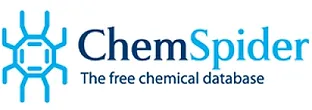AGGIORNAMENTO SCIENTIFICO IN TEMPO REALE FORNITO DA:

Most-Read Full-Text Articles
- Advancing Network Meta-Analysis in Non-Invasive Brain Stimulation: Optimizing Post-Stroke Mood through Combined Therapiesby Rui Li on 23 Aprile 2025
CONCLUSIONS: The findings suggest that optimized combination NIBS therapies offer superior outcomes for post-stroke depression and anxiety. HFrTMS_LFrTMS_WM was the most effective for depression and independence in activities of daily living (ADLs), while tDCS_psychotherapy and TUS_WM were particularly effective for anxiety. These results highlight the clinical potential of integrated NIBS strategies for post-stroke mood optimization and call for further research to refine treatment protocols...
- Effects of Transcranial Magnetic Stimulation on Cognitive-Affective Task-Based Functional Connectivityby Merideth A Addicott on 21 Aprile 2025
Objective: Repetitive transcranial magnetic stimulation (rTMS) uses electromagnetic fields to induce electrical currents in the superficial cortex, and this electric signal is believed to propagate to functionally connected distal brain regions. We previously reported that rTMS targeting the postcentral gyrus affected resting-state functional connectivity with the posterior insula. The current study investigated whether rTMS targeting the postcentral gyrus would affect task-based functional...
- Effects of Combined Transcranial Magnetic Stimulation and Photobiomodulation in Mild Cognitive Impairment: A Randomized Controlled Trialby Da Han on 20 Aprile 2025
This study evaluates the synergistic effects of transcranial magnetic stimulation (TMS) and transcranial photobiomodulation (tPBM) on working memory (WM) in mild cognitive impairment (MCI) patients. In a randomized controlled trial with 88 participants, utilizing a complex WM task (ΔK = 6.41, p = 0.004) alongside functional near-infrared spectroscopy (fNIRS) to assess cognitive performance and neural correlates(neural metrics from fNIRS indicated enhanced functional connectivity [p = 0.015] and...
- Diagnostic utility of threshold tracking TMS paradigms in early amyotrophic lateral sclerosisby Aicee Dawn Calma on 18 Aprile 2025
CONCLUSION: While threshold tracking TMS reliably differentiated ALS from mimic disorders, the present study established better diagnostic utility with the serial ascending threshold tracking TMS paradigm.
- Neural correlates of psychotherapy in mental disorders: A meta-analysis of longitudinal resting-state fMRI studiesby Ya-Xin Zheng on 17 Aprile 2025
CONCLUSIONS: The current study indicates that the clinical efficacy of psychotherapy may be modulated by insular and right inferior frontal gyrus through neurological perspective. This contributes to our understanding of the neurobiological mechanisms of psychotherapy and provides valuable insights into improving precise targeting interventions for individuals with mental disorders.
- Harnessing neuroimaging-guided transcranial magnetic stimulation for precision therapy in substance use disordersby Smita Sahay on 16 Aprile 2025
Substance use disorders (SUDs) are a critical public health challenge characterized by high relapse rates, with existing treatments often proving inadequate. The focus of this review is to provide an update on the current state of transcranial magnetic stimulation (TMS) as a therapeutic intervention for SUDs and discuss neuroimaging-guided TMS practices. This review explores the neurobiology underlying SUDs, emphasizing the roles of the prefrontal cortex, striatal circuits, and dopaminergic...
- Young Adults with Anxiety Disorders Show Reduced Inhibition in the Dorsolateral Prefrontal Cortex at Higher Trait Anxiety Levels: A TMS-EEG Studyby Lena Pokorny on 14 Aprile 2025
CONCLUSION: There appears to be a decrease in GABA-B-mediated cortical inhibition in the DLPFC in subjects with anxiety disorders. The correlation between trait anxiety and N100 amplitudes suggests a trait-related modulation of cortical inhibition.
- Precisely-timed outpatient recordings of subcortical local field potentials from wireless streaming-capable deep-brain stimulators: a method and toolboxby Cheol Soh on 12 Aprile 2025
CONCLUSIONS: We present a method and a MATLAB toolbox that inserts the most precise digital timing information into wirelessly-streamed DBS-LFP recordings to date. By enabling event-related research with high-temporal precision, this method greatly enhances the utility of these recordings.
- Affective state-dependent effects of prefrontal rTMS on the cognitive control of negative stimuli in healthy and depressed individualsby Jasmina Paneva on 11 Aprile 2025
CONCLUSION: These results underscore the role of HF-rTMS in enhancing executive control over negative emotional information by modulating lDLPFC, with effects varying according to depression state at the moment of the treatment session. HF-rTMS thus not only enhances inhibitory control over emotional stimuli but also exhibits such cognitive effects contingent on depressive state, contributing to our understanding of the state-dependence of therapeutic rTMS.
- The simulation and experimental validation of a novel noninvasive multi-target electrical stimulation methodby Kai Zhu on 11 Aprile 2025
The brain is a complex system of structure and function. Brain diseases and brain functional abnormalities often involve multiple functionally connected regions, including the deep brain. Studies have shown that multi-target electrical stimulation is more effective than single-target electrical stimulation. However, non-invasive multi-target electromagnetic stimulation, such as multi-target transcranial magnetic stimulation (TMS), transcranial direct current stimulation (tDCS) and transcranial...
- Stratification algorithm for repetitive TMS in stroke (START): Results from an exploratory crossover studyby Yin-Liang Lin on 10 Aprile 2025
The role of contralesional motor cortices in paretic upper extremity (UE) motor recovery following stroke varies based on available structural reserve. However, an optimal measure of the reserve to stratify patients for different contralesional brain stimulation remains unknown. This study aimed to establish severity criteria distinguishing which patients benefit more from inhibitory contralesional motor cortex (M1) stimulation versus facilitatory contralesional dorsal premotor cortex (cPMd)...
- Durability of clinical benefit with Stanford Neuromodulation Therapy (SNT) in treatment-resistant depressionby Andrew D Geoly on 10 Aprile 2025
CONCLUSIONS: At 12 weeks, a subset of participants remained in remission, suggesting that the durability of SNT warrants further study. Comparisons with conventional rTMS should be interpreted cautiously given differences in study design, populations, and outcome measures.
- Identification of Cortical Targets for Modulating Function Supported by the Human Hippocampal Networkby Hsin-Ju Lee on 9 Aprile 2025
Individualized transcranial magnetic stimulation (TMS) targeting using functional connectivity analysis of functional magnetic resonance imaging (fMRI) has been demonstrated to be advantageous in inducing neuroplasticity. However, how this approach can benefit modulating the episodic memory function supported by the hippocampal network remains elusive. We use the resting-state fMRI data from a large cohort to reveal tentative TMS targets at cortical regions within the hippocampal network....
- Clinical and Neurophysiological Effects of Robotically-Delivered fMRI-Guided Personalized Transcranial Magnetic Stimulation Therapy for Depressionby Luke J Hearne on 9 Aprile 2025
CONCLUSION: Our findings provide new clinical and neurophysiological evidence supporting the high effectiveness of fMRI-connectivity-guided personalized rTMS for MDD, especially in individuals without complex comorbidities. The results encourage future RCTs to assess the superiority of personalized targeting over standard TMS.
- Comprehensive evaluation of U-Net based transcranial magnetic stimulation electric field estimationsby Taylor A Berger on 9 Aprile 2025
Transcranial Magnetic Stimulation (TMS) is a non-invasive method to modulate neural activity by inducing an electric field in the human brain. Computational models are an important tool for informing TMS targeting and dosing. State-of-the-art modeling techniques use numerical methods, such as the finite element method (FEM), to produce highly accurate simulation results. However, these methods operate at a high computational cost, limiting real-time integration and high throughput applications....

















